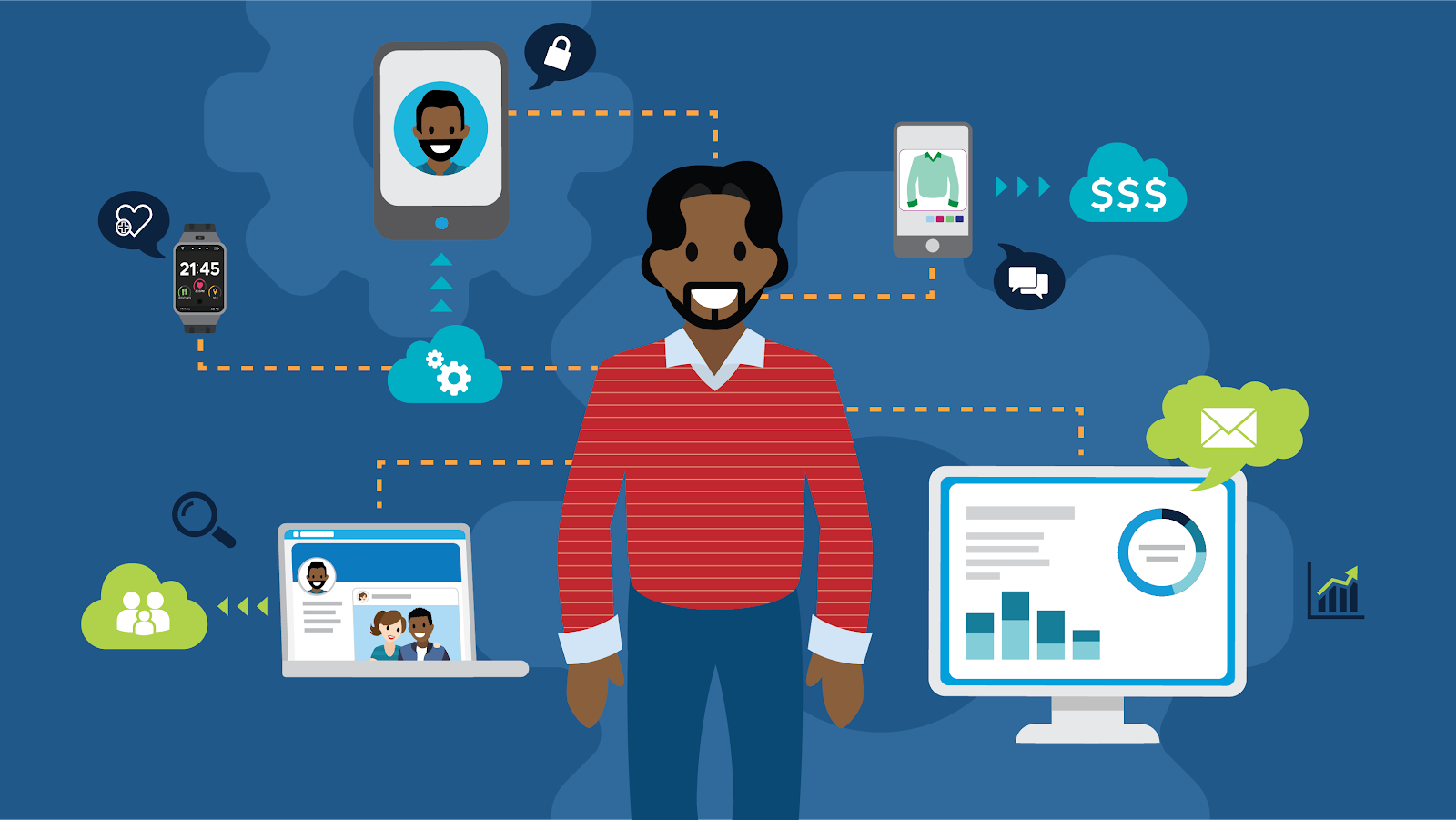Personalize Marketing and Online Buying Experiences
Learning Objectives
After completing this unit, you’ll be able to:
- Describe why it’s important to understand the customer’s needs.
- List ways to make the customer experience more meaningful.
- Use the data flywheel for data-fueled transformation.
Listen to What Customers Want
Why did your customer cross the road? Trick question. Some organizations never take the time to find out.
More and more, consumers are making choices based on “responsive targeting,” which is all about delivering relevant experiences that resonate with the customer and drive them to make a purchase. In technical terms, companies can deliver this type of targeting through data amalgamation.
In business terms, this type of experience is all about making the consumer feel known and understood. Saying that it’s important is a big understatement.
If all you know about a consumer is their identifier data (like name and address), communication history (did they open your last email?), or channel engagement (where they like to spend their time), you don’t really know them in a way that helps you. That’s why it’s important to use digital technology to connect with each and every consumer. You need to truly understand their needs, and then meet those needs with your company’s unique value.
Add Value and Meaning to Customer Experiences
As we mentioned, traditionally, most wholesalers, B2B, and consumer goods companies had to rely on the retailer’s understanding of consumers in order to sell their goods. Now, they’re able to gain a competitive edge by designing ways to learn about consumers themselves—both directly and indirectly.

Companies today are able to develop a picture of who their customers are from studying their first-party data. It shows them customer behaviors like online browsing, in-app choices, service engagement, sales history, and in-store activity. First-party data can tell them what customers want and need and allow them to take meaningful action.
Unify Your Data
The reality is, most companies work with static data—and they struggle to unify it across marketing, commerce, service, and beyond.
Technology such as a customer data platform (CDP) allows you to share data across platforms to unlock its value. A CDP provides a centralized, unified view—or single source of truth—of each customer. This enables you to drive personalization and increase conversion. Merchandisers can look at customer behaviors and engagements across ecommerce, physical, third-party, and social channels to gain insights and better personalize product recommendations and discount offers, to drive conversion and loyalty.
Personalization Is the Next Step
So how do you turn data and emerging insights into opportunities for action? A CDP natively integrated with your commerce platforms lets you use ecommerce and external data sources such as Point of Sale and Loyalty to unleash contextual, personalized consumer experiences. You can measure each action and apply analytics at every step to continually improve. With first-party data as the organizing principle of the platform, you can deliver more value to consumers in whatever form they prefer. In essence, you let the consumer decide.
Then, Engage
Think about some of the most successful ad campaigns in history. They delivered a personalized message to specific consumers in their chosen channel. There’s no one-size-fits-all approach to engagement. With customer identities and profiles within the CDP, brands have a more holistic view of the customer to do segmentation and power even more relevant shopping journeys, ultimately providing truly customer-centric commerce experiences. Your team’s creativity and business needs are the guide. Serve the specific needs of each consumer and tailor each micromoment to evoke different calls to action.
Continue to Evolve
The more you know about your consumers, the more you’re able to offer them an experience that captivates and builds a relationship. This drives ongoing engagement, brand equity, and value.
For example, marketers and merchandisers can use data-rich analytics to spot trends, identify the most popular items, understand the efficacy of promotions, determine the propensity to buy, and more.
Use the Data Flywheel
Employ the data flywheel approach to build an agile, responsive marketing and learning organization. According to the flywheel theory, every action that a company takes that’s based on a consumer data insight provides a new consumer experience. Each consumer experience generates more data. This data might be what someone clicks and opens or how consumers respond to more complex engagements in owned and paid media properties.
First, your effort creates progress. Then, your progress generates exponential returns.

As the data flywheel turns, your fuel gets richer, your insights more robust, and your actions stronger. You tap into the dynamic context of the consumer, bolster your first-person data, and move to a direct-to-consumer (D2C) initiative.
Summing It Up
In the future, winning will come from the ability to personalize commerce at scale. Companies must quickly provide products, services, and experiences that are immediately relevant to consumers—and reflect a meaningful understanding of the consumer and what matters to them.
But personalizing relationships is hard. Most companies say having a single source of truth around customer data is their number one challenge. Legacy data sitting in different silos, customers with multiple IDs, moving between channels in real time, and new privacy legislation are all obstacles they need to overcome. But with the right tools and technology, companies can start unlocking the value of their data and move the commerce industry forward.
While the value of consumer data is still hard to quantify, you should now understand its qualitative effects. It can put you on the path to providing more personalized customer experiences, leading to deeper relationships, more loyalty, and ultimately greater market share.